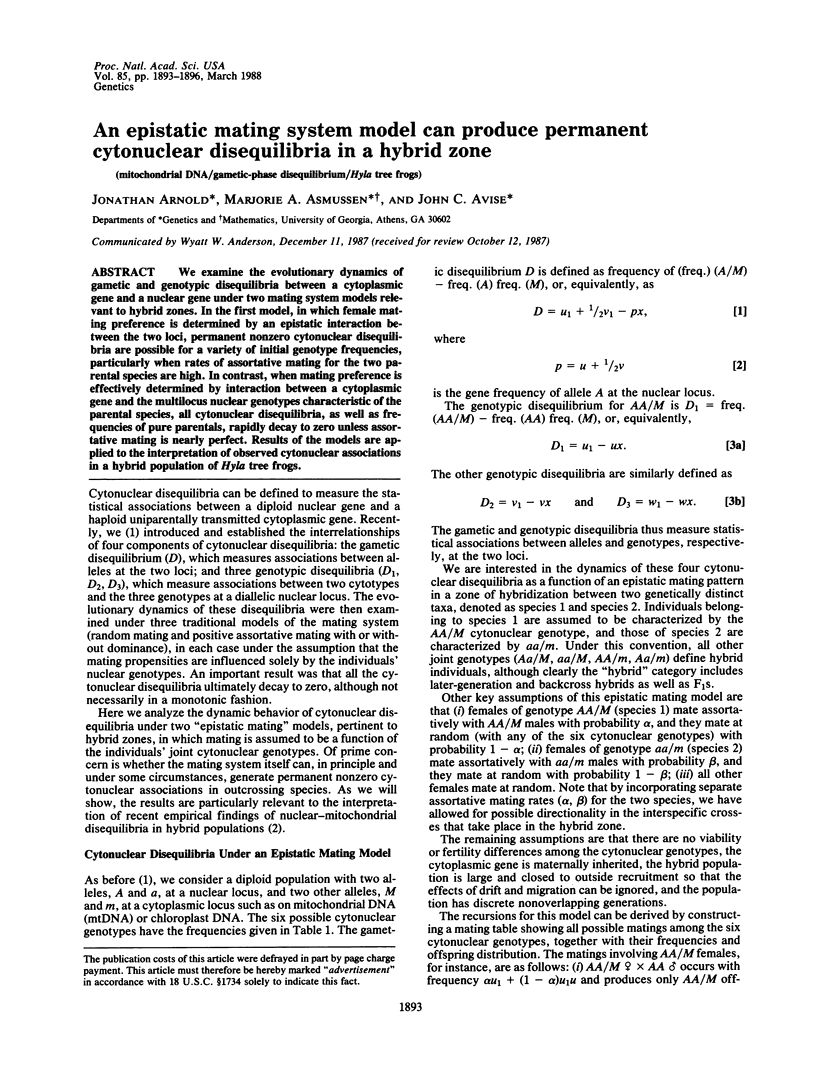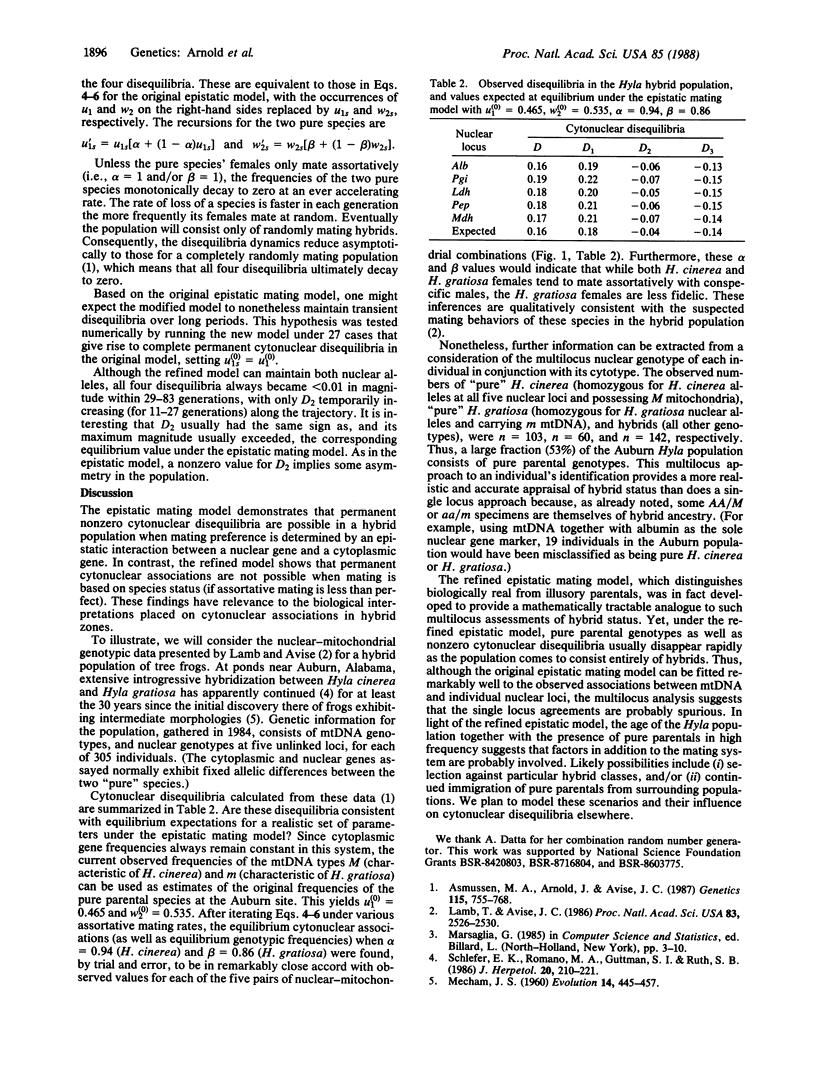Abstract
We examine the evolutionary dynamics of gametic and genotypic disequilibria between a cytoplasmic gene and a nuclear gene under two mating system models relevant to hybrid zones. In the first model, in which female mating preference is determined by an epistatic interaction between the two loci, permanent nonzero cytonuclear disequilibria are possible for a variety of initial genotype frequencies, particularly when rates of assortative mating for the two parental species are high. In contrast, when mating preference is effectively determined by interaction between a cytoplasmic gene and the multilocus nuclear genotypes characteristic of the parental species, all cytonuclear disequilibria, as well as frequencies of pure parentals, rapidly decay to zero unless assortative mating is nearly perfect. Results of the models are applied to the interpretation of observed cytonuclear associations in a hybrid population of Hyla tree frogs.
Full text
PDF



Selected References
These references are in PubMed. This may not be the complete list of references from this article.
- Asmussen M. A., Arnold J., Avise J. C. Definition and properties of disequilibrium statistics for associations between nuclear and cytoplasmic genotypes. Genetics. 1987 Apr;115(4):755–768. doi: 10.1093/genetics/115.4.755. [DOI] [PMC free article] [PubMed] [Google Scholar]
- Lamb T., Avise J. C. Directional introgression of mitochondrial DNA in a hybrid population of tree frogs: The influence of mating behavior. Proc Natl Acad Sci U S A. 1986 Apr;83(8):2526–2530. doi: 10.1073/pnas.83.8.2526. [DOI] [PMC free article] [PubMed] [Google Scholar]


